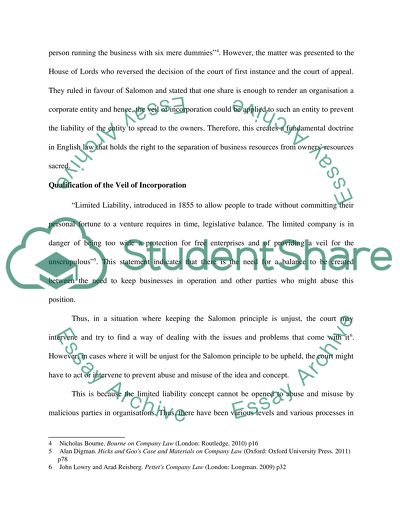Cite this document
(“What is meant by piercing the veil of incorporation Using examples Essay”, n.d.)
What is meant by piercing the veil of incorporation Using examples Essay. Retrieved from https://studentshare.org/law/1627685-what-is-meant-by-piercing-the-veil-of-incorporation-using-examples-from-the-case-law-consider-critically-some-of-the-different-reasons-why-it-might-be-thought-appropriate-to-pierce-the-veil-explain-why-the-doctrine-has-been-controversial-and-cons
What is meant by piercing the veil of incorporation Using examples Essay. Retrieved from https://studentshare.org/law/1627685-what-is-meant-by-piercing-the-veil-of-incorporation-using-examples-from-the-case-law-consider-critically-some-of-the-different-reasons-why-it-might-be-thought-appropriate-to-pierce-the-veil-explain-why-the-doctrine-has-been-controversial-and-cons
(What Is Meant by Piercing the Veil of Incorporation Using Examples Essay)
What Is Meant by Piercing the Veil of Incorporation Using Examples Essay. https://studentshare.org/law/1627685-what-is-meant-by-piercing-the-veil-of-incorporation-using-examples-from-the-case-law-consider-critically-some-of-the-different-reasons-why-it-might-be-thought-appropriate-to-pierce-the-veil-explain-why-the-doctrine-has-been-controversial-and-cons.
What Is Meant by Piercing the Veil of Incorporation Using Examples Essay. https://studentshare.org/law/1627685-what-is-meant-by-piercing-the-veil-of-incorporation-using-examples-from-the-case-law-consider-critically-some-of-the-different-reasons-why-it-might-be-thought-appropriate-to-pierce-the-veil-explain-why-the-doctrine-has-been-controversial-and-cons.
“What Is Meant by Piercing the Veil of Incorporation Using Examples Essay”, n.d. https://studentshare.org/law/1627685-what-is-meant-by-piercing-the-veil-of-incorporation-using-examples-from-the-case-law-consider-critically-some-of-the-different-reasons-why-it-might-be-thought-appropriate-to-pierce-the-veil-explain-why-the-doctrine-has-been-controversial-and-cons.


